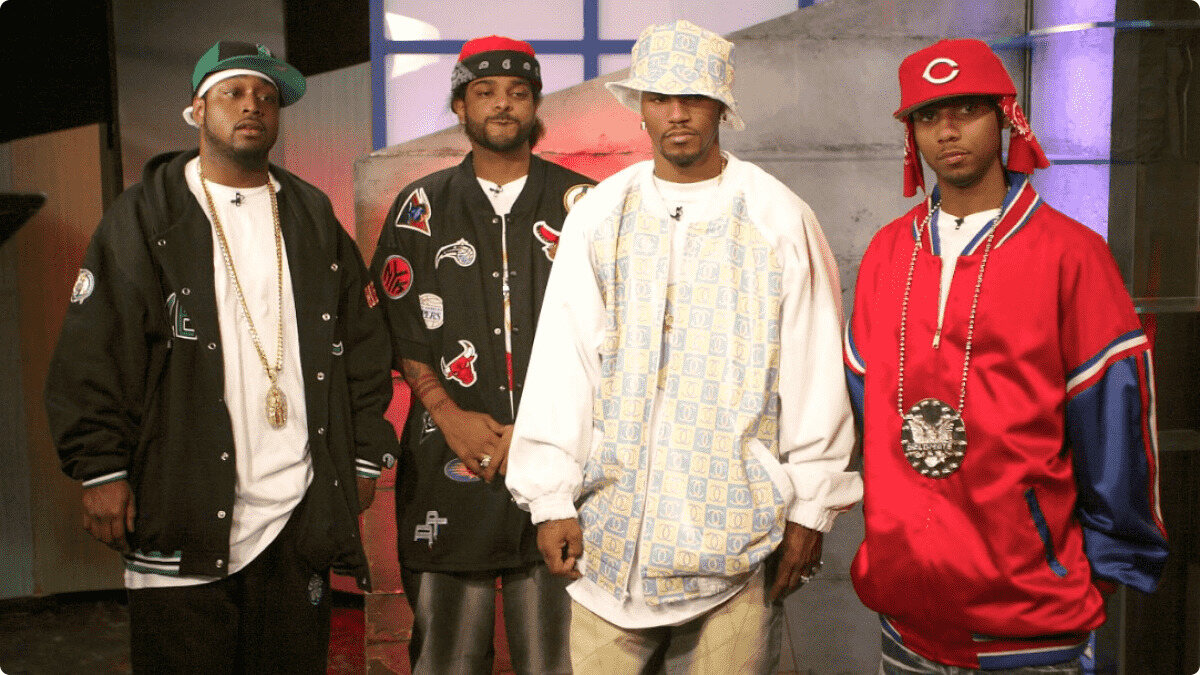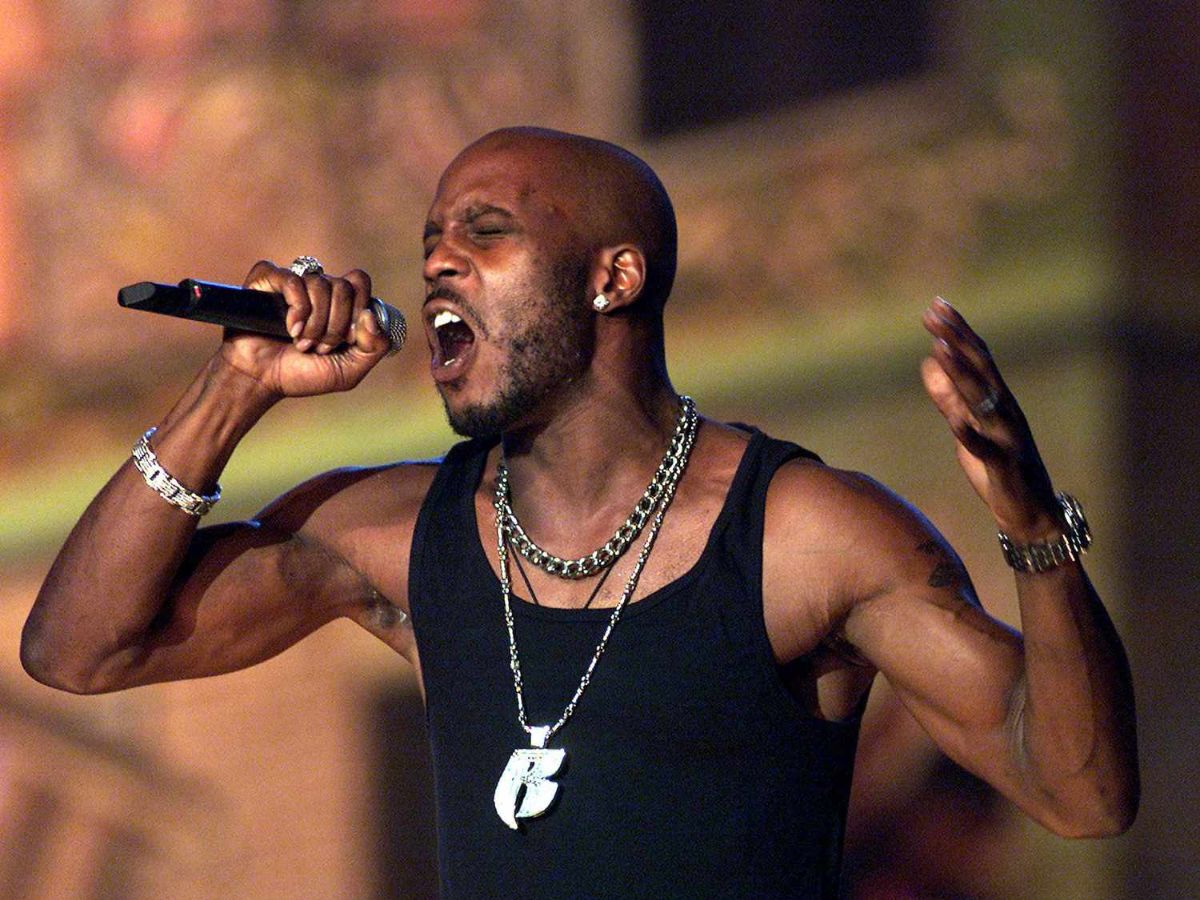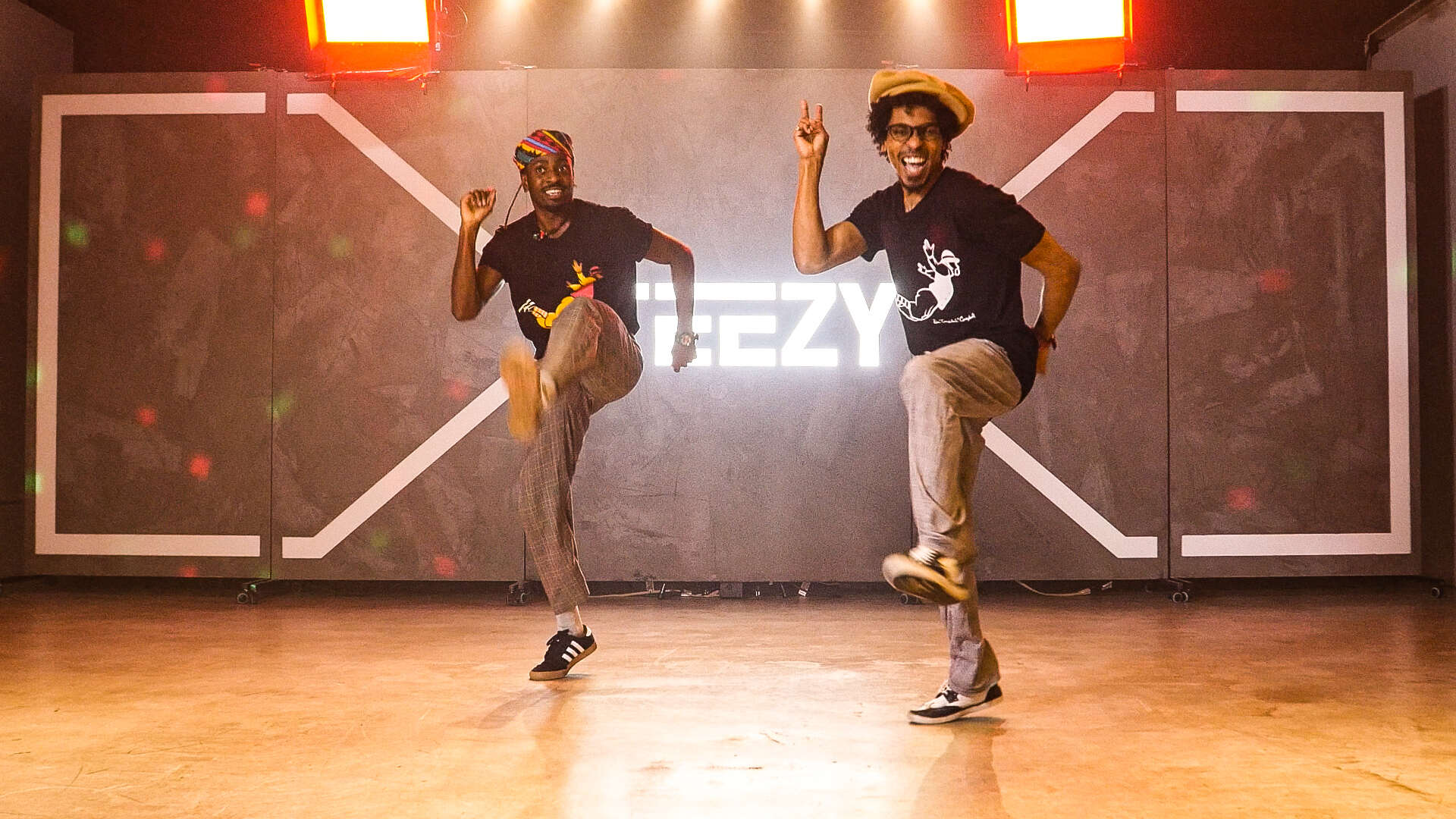Home>Genres>Hip Hop>What Countries Listen To Hip Hop The Most


Hip Hop
What Countries Listen To Hip Hop The Most
Modified: January 22, 2024
Discover which countries have the highest affinity for Hip Hop music and explore the global impact of the genre. Uncover the top nations that listen to Hip Hop the most.
(Many of the links in this article redirect to a specific reviewed product. Your purchase of these products through affiliate links helps to generate commission for AudioLover.com, at no extra cost. Learn more)
Table of Contents
Introduction
Hip hop has become a dominant force in the world of music, captivating audiences with its unique blend of beats, rhymes, and storytelling. Originating in the streets of the Bronx, New York, in the 1970s, hip hop has since evolved into a global phenomenon, transcending cultural boundaries and influencing music, fashion, and popular culture.
However, the popularity of hip hop is not evenly distributed worldwide. Certain countries have embraced the genre more fervently than others, creating vibrant hip hop scenes and passionate fan bases. In this article, we will take a closer look at the countries that listen to hip hop the most and explore the regional differences in hip hop listening habits.
Before we delve into the details, it’s important to note that determining the “top” hip hop countries is subjective and can vary depending on different factors such as sales, streaming numbers, and live performances. For the purpose of this article, we will rely on a combination of data and cultural significance to identify the top hip hop countries.
Methodology
Measuring the popularity of hip hop in different countries can be a challenging task, as there are various factors to consider. To determine the top countries for hip hop, we utilized a combination of data sources and cultural research.
Firstly, we analyzed streaming data from popular platforms such as Spotify, Apple Music, and YouTube. These platforms provide valuable insights into which countries have the highest number of streams for hip hop artists and albums. Additionally, we looked at music charts and sales figures to gauge the commercial success of hip hop music in different regions.
Furthermore, we conducted cultural research to assess the influence and impact of hip hop in various countries. This involved examining the local hip hop scenes, the number of hip hop festivals, the presence of hip hop radio stations, and the overall recognition and support for hip hop artists within a country’s musical landscape. We also considered the number of notable hip hop artists originating from each country.
It is important to note that the methodology used in this analysis is based on available data and subjective interpretation. The results may vary depending on the sources and criteria used to evaluate hip hop popularity. Nevertheless, this approach provides valuable insights into the countries that have embraced hip hop culture and have a thriving hip hop scene.
Top Countries for Hip Hop
When it comes to the top countries for hip hop, the United States undoubtedly takes the lead. As the birthplace of the genre, the U.S. has a rich history and a huge impact on the global hip hop scene. With influential artists like Jay-Z, Kendrick Lamar, Drake, and Cardi B, American hip hop dominates music charts and sets trends worldwide.
Another country that has made a significant impact on the hip hop landscape is Canada. Artists like Drake, The Weeknd, and Tory Lanez have achieved international success and garnered a massive following. Canadian hip hop blends various influences and showcases a distinct style and sound.
Moving across the Atlantic, the United Kingdom has emerged as a prominent player in the global hip hop scene. With artists like Stormzy, Skepta, and Little Simz, UK hip hop has gained recognition for its unique blend of grime, rap, and Afrobeat influences. The UK’s vibrant urban music scene and its ability to produce talented artists have contributed to its rise as a top hip hop country.
France is another country that has embraced hip hop culture with open arms. French hip hop, or “le rap,” has its own distinctive style and has produced renowned artists such as IAM, Booba, and MC Solaar. The French hip hop scene is known for its thought-provoking lyrics, social commentary, and innovative production.
Germany has also made its mark in the world of hip hop. With artists like Kool Savas, Kollegah, and Cro, German hip hop combines elements of traditional rap with influences from pop, rock, and electronic music. The German scene has a diverse range of styles and has gained popularity both domestically and internationally.
Other notable countries for hip hop include Australia, with artists like Hilltop Hoods and Tkay Maidza representing the thriving Australian scene, and South Africa, where hip hop is deeply rooted in the country’s history and culture, with artists like AKA and Nasty C gaining global recognition.
It’s important to acknowledge that hip hop’s popularity extends far beyond these countries. Many other nations, such as Brazil, Nigeria, Japan, and Sweden, have their own flourishing hip hop scenes that are celebrated locally and have gained international recognition.
The top countries for hip hop are constantly evolving, as new artists emerge and different regions embrace the genre. With the global reach of music streaming and social media, hip hop has become a truly universal language, connecting people from all walks of life and transcending borders.
Regional Differences in Hip Hop Listening
While hip hop has a global appeal, there are notable regional differences in the way it is listened to and appreciated. These differences are influenced by local cultures, musical traditions, and socio-economic factors. Let’s explore some of the regional variations in hip hop listening habits.
In the United States, where hip hop originated, the genre has deeply ingrained itself in the mainstream music industry. It dominates radio airwaves and charts, and its influence can be felt across various genres. Hip hop concerts and festivals draw massive crowds, showcasing the strong connection between American audiences and the music. The United States also boasts a thriving underground hip hop scene, with local communities and artists fostering a sense of unity and creativity.
In the United Kingdom, the grime scene has taken the local hip hop culture by storm. Originating in London, grime music combines elements of hip hop, garage, and electronic music. It reflects the realities of urban life and resonates with the experiences of young people in the UK. Grime artists often showcase their skills through intense freestyle rap battles and energetic live performances, creating a unique listening experience for fans.
In France, hip hop has become a powerful outlet for social and political expression. French hip hop artists tackle a range of topics, including racism, inequality, and social issues faced by marginalized communities. The lyrical depth and poetic nature of French rap have garnered international acclaim, making it an influential force in the global hip hop landscape.
In Africa, hip hop holds a special place in the hearts of many. In countries like Nigeria, South Africa, and Ghana, hip hop has been embraced as a means of storytelling and cultural preservation. African hip hop artists often infuse their music with local languages, traditional rhythms, and themes that reflect their unique cultural identities. From Afrobeat-inspired rap to conscious lyricism, African hip hop offers a diverse and captivating listening experience.
Asian countries, such as Japan and South Korea, have also developed their own vibrant hip hop scenes. In Japan, hip hop has been embraced as a form of self-expression and rebellion, while South Korea’s K-pop industry has integrated hip hop elements into its music, creating a fusion of styles that resonates with fans both domestically and internationally.
These regional differences highlight the diverse ways in which hip hop is embraced and adapted around the world. Each country brings its own cultural nuances, musical influences, and lyrical storytelling to the genre, resulting in a rich tapestry of hip hop that continues to evolve and push boundaries.
Influences on Hip Hop Listening Habits
The listening habits of hip hop fans are influenced by a variety of factors, including cultural, social, and technological influences. These factors contribute to the way people engage with hip hop music and shape their preferences within the genre.
Culture plays a significant role in shaping hip hop listening habits. In the United States, for example, where hip hop originated, the genre is deeply ingrained in the cultural fabric and has a wide audience. The influence of African American culture, with its rich history of music and storytelling, is evident in the lyrical themes, rhythms, and overall style of hip hop. Similarly, in other countries, such as France and the United Kingdom, hip hop has been embraced as a powerful form of cultural expression, representing the experiences and perspectives of different communities.
Social factors also play a crucial role in hip hop listening habits. The music industry, media, and peer groups all contribute to shaping what people listen to within the hip hop genre. The popularity of certain artists, trends, and music videos can influence listeners’ preferences and introduce them to new sounds and styles. Additionally, peer influence and community engagement within local hip hop scenes can expose fans to underground or lesser-known artists who offer unique perspectives and sounds.
The rise of digital technology has had a profound impact on hip hop listening habits. Streaming platforms, such as Spotify and Apple Music, have made it easier than ever for fans to access and discover hip hop music from around the world. The ability to create personalized playlists, share music with friends, and access a vast catalog of artists and albums has transformed the way people engage with hip hop. Social media platforms and online communities also provide spaces for fans to connect, discuss, and share their favorite hip hop music and artists.
Furthermore, collaborations and cross-genre influences have expanded the boundaries of hip hop, attracting listeners who may not have traditionally gravitated towards the genre. Artists like Jay-Z collaborating with pop stars, or hip hop artists incorporating elements of rock, electronic, or Latin music, have introduced new sounds and styles to the genre, broadening its appeal and attracting diverse audiences.
Economic factors also come into play in hip hop listening habits. The accessibility and affordability of music streaming services have made it easier for people from various socio-economic backgrounds to explore and engage with hip hop. Additionally, the influence of marketing and promotional efforts by record labels and music industry stakeholders can shape listening habits, as they introduce new artists, promote specific releases, and create awareness around certain songs or albums.
Ultimately, the influences on hip hop listening habits are a dynamic interplay of cultural, social, technological, and economic factors that shape how fans engage with the genre. The ever-evolving nature of hip hop ensures that it continues to captivate and resonate with listeners around the world, while also reflecting the diverse experiences and perspectives within different communities.
Conclusion
Hip hop’s global popularity is undeniable, and its impact on music and popular culture is unparalleled. Through this article, we have explored the top countries for hip hop, the regional differences in hip hop listening habits, and the various influences that shape how fans engage with the genre.
From its origins in the streets of the Bronx, hip hop has spread its influence across the world, with the United States at the forefront. The US remains a dominant force in hip hop, nurturing a diverse range of artists and shaping the global trajectory of the genre. However, countries like Canada, the United Kingdom, France, and Germany have also made significant contributions to the hip hop landscape with their unique styles, cultural influences, and talented artists.
Regional differences in hip hop listening habits reflect the diversity and cultural nuances of different countries. Whether it’s the grime scene in the UK, the social and political commentary in French hip hop, or the fusion of traditional rhythms in African hip hop, each region brings its own flavor to the genre.
The listening habits of hip hop fans are influenced by a multitude of factors. Culture, social influences, technology, and economics all play a role in shaping preferences within the genre. The rise of streaming platforms, the impact of social media, and the collaborations and cross-genre influences have all contributed to the dynamic and ever-evolving nature of hip hop.
In conclusion, hip hop’s universal appeal transcends borders, cultures, and languages. It continues to captivate listeners around the world, providing a platform for self-expression, storytelling, and cultural representation. As the genre continues to evolve and adapt, it is clear that hip hop’s impact will only continue to grow, inspiring and influencing future generations of artists and music lovers.











